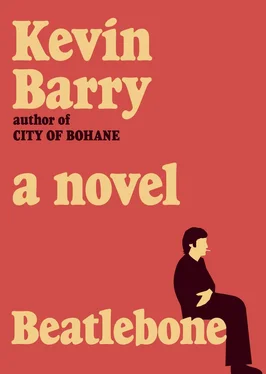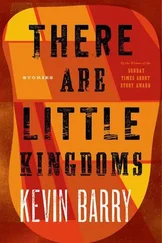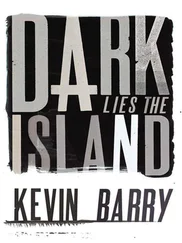——
The Diggers raised a village of tents. They scoured out hollows in the ground to hold their food. They set vegetable patches and raised stone walls for windbreaks. The soil on Dorinish was good and the patches took easily. Once a fortnight, an oyster boat stopped by and brought a delegation to Westport town to buy groceries there. The group stayed on the island for about a year and a half. Most of the original commune remained intact, and there were others that came and went, but late in 1972, a fire of mysterious origin destroyed the main supplies tent and the Diggers started to move from Dorinish in small groups.
Sid Rawle was the last holdout. For the final days of the Diggers’ reign on Dorinish Island he was alone out there. When I later found a fish-farmer to bring me to the island, he told me a story from his father’s time, a story about Rawle being taken from Dorinish. He was cold and starving and close to raving. He was brought to the pub near Murrisk Pier and fed whiskey and sandwiches. He didn’t say much that night but later he would say that Dorinish was heaven and it was hell. He returned to Britain and was soon among the founders of the Tipi Valley commune in the Forest of Arden, the first of the major New Age Traveller encampments; almost two hundred people lived there for the best part of twenty years.
I was seeking a contact for Sid Rawle in 2012 when word filtered through that he had died suddenly at a festival outside Leeds at the age of seventy.
——
Whatever it is that you’re most scared of surfacing in your work, you can be sure that it’s nearby.
I have always been both repelled by and drawn to sentimental forces. I lived in Liverpool for two years and thought it the most sentimental city on earth, with the possible exception of Glasgow. Sentimentality was an enveloping mist that clung to the skin as I walked on a summer night the ale-scented streets; it was there in the timbre of the voices, as the lairy city gulls hovered above, and it was in the watery gleam of the same old man’s eyes that seemed to peer from every pub I passed by. It was a city that seemed nostalgic for its own youth and self, and I wallowed in the mawkishness as though to spite myself.
As a ten-year-old, what I seemed to find most distressing about the fact of a recently dead mother was the seeming mawkishness of having to admit to one. Suddenly unmoored, I needed to accomodate the event within the realm of normalcy, and to do so, it needed to be relegated to the back of the mind, to the dark recesses, and as a child you cannot tell what work it will do once planted back there, you cannot predict the ways in which it will pin you down and mark you always, but neither can you predict the ways in which it will set you free.
Now when I think of that event — her name was Josephine — it is usually to see how I might use it and manipulate it to add depth and resonance to my work but without allowing sentimentality to creep pinkly through.
——
What I mean to say is that I wanted to Scream.
The idea was that I would get to the island and I would Scream, I would Scream until I was hoarse and my throat was cut and ribboned, and I would let out all of the green bile that seeps up in a life — the envy, the jealousy, the meanness — and I would let out all of the hate — especially the hate — and I would Scream to the grey sky above me and Scream to the stars and taunt the night.
I intended to spend three days and three nights on Dorinish Island. I imagined this was going to be an odd, meditative interlude in my life — three days of utter inwardness; an exploration of inner space; a seablown breeze to clear all the webs away — and I would return to report my findings in a mature, honed prose, as clear as glass: this from a man who had never knowingly underfed an adjective.
Early on another May afternoon, I cycled the ten miles from Westport to Murrisk Pier. I arrived just as the fish-farmer docked his boat. I do not have the words for boats. I can say only that it was a small boat with an outboard motor. I felt ladylike and impractical as I was helped onto the boat. I carried an Arctic sleeping bag and a small backpack that contained food, notebooks and a bottle of whiskey. I had a mobile phone for use only in emergencies. We set off for Dorinish. I was boyishly excited but also I felt a little sheepish. The boat slapped hard against the waves as it zipped smartly across the water. Small islands came into view as locket shapes and faded as quickly. There was an island shaped like a boot spur; there was an island shaped like a scimitar moon. It was cold on the water and my stomach looped on the dip and rise and the quick sloping of the boat as it moved across Clew Bay. Once a valley I was among its clouds. The tips of its peaks came into view as knuckles and mounds. I recognised Dorinish at once as it appeared: a pair of sisterly cliffs that rise as buttresses against the Atlantic. The engine cut as the boat was worked with tidy skill close to the stones of the island. I climbed out and made it through the foaming ebb of the tide and onto the shore. The fish-farmer waved as he departed again for the length of three days and three nights.
I was alone then on the island.
——
John Lennon published two books of stories or prose fragments: In His Own Write and A Spaniard in the Works . His style is built on heavy punning and the formation of madcap compound words that roll out across trippy sentences. At its very occasional best, it has a playfulness and comic intelligence that reads something like Spike Milligan as shot through Dylan Thomas or James Joyce. In fact, he had a teenage obsession with Thomas that persisted into his adult years, and later, when his first book appeared and was dutifully compared to Joyce, he bought a copy of Finnegans Wake , and he read a few pages and loved it — he said it sounded like the voice of an old friend — but he couldn’t be bothered to read any more than those few pages.
His own stories, or fragments, suggest great potential but read like first drafts. His prose writing flitters along the surface of things only, and it is funny and vivid and pacy, but it never slows or comes down through the gears sufficiently to allow moments of tenderness, sadness, love, anger, bitterness, or rancour, all the sweet and thorny emotions he routinely sprang in his brilliant and nerveless songwriting.
——
He wanted to walk out in the world. He began to make odd excursions. In 1978, he visited Japan alone. He flew there via South Africa — he carried just a single overnight bag. He had a couple of hours stopover in South Africa and he asked a cabdriver to show him some of the country. The driver brought him to a park where he just sat quietly for a while. In Japan, he walked into a hotel and for the first time in his life he booked a room for himself. He walked the streets and nobody could see him. He stepped onto a ferry and stood among the crowd of commuting workers on the deck and kept his eyes down and found to his delight that he was invisible there.
——
The first of the famous photographs are from his teenage teddy boy phase in the late 1950s. “Teddy,” of course, abbreviates from Edwardian; the teddy boy fashion of this time was essentially a reprise of the dandyish look adopted by gangs of mostly Irish street boys in Salford and Liverpool in the 1880s. They were at that time known as Scuttlers, and they were very cool and extremely vicious. I came to see him essentially as a kind of Edwardian type: the Melancholy Dandy. It was suggested in the way that he carried himself. And the way that we carry ourselves is dictated primarily, I believe, by the secret airs and reverberations of our places.
——
There is a natural roll or jauntiness to the step when you walk down Bold Street on a busy afternoon. The street is alive with youthful energies; Bold Street is where the cooler kids hang about in their dapper regiments and they have a natural swagger in Liverpool, a kind of haughty belligerence lacked by their contemporaries in London or Dublin. Fashion houses still send scouts to walk the Liverpool streets and report on what the teenage kids are wearing and how they’re cutting their hair.
Читать дальше












